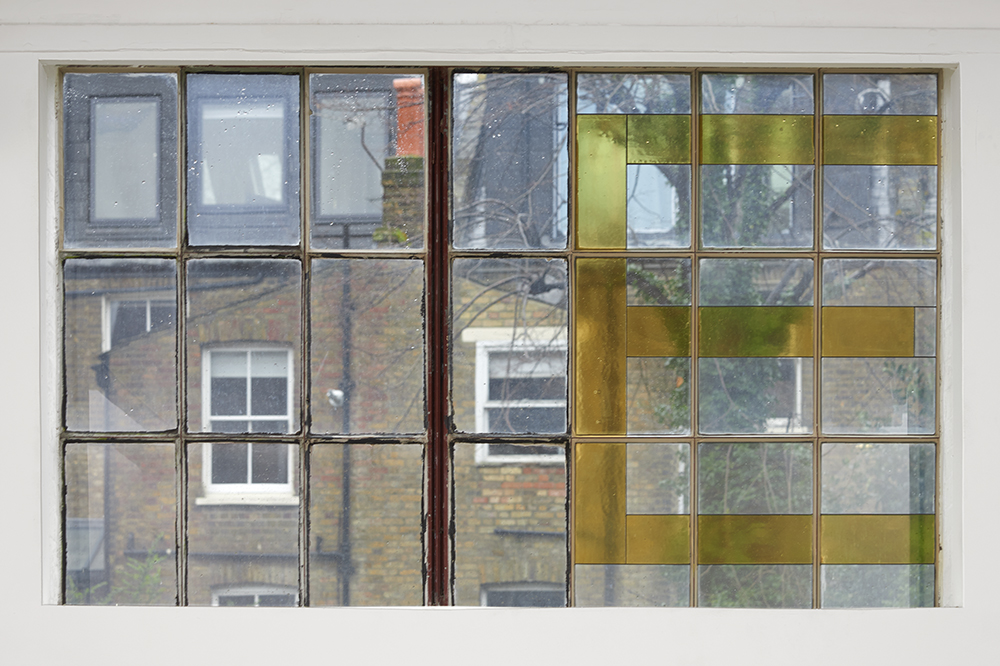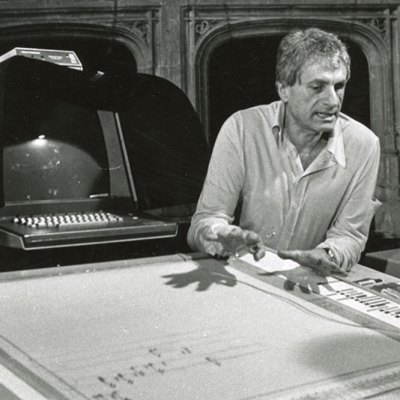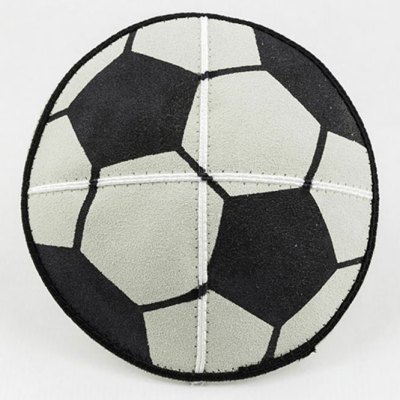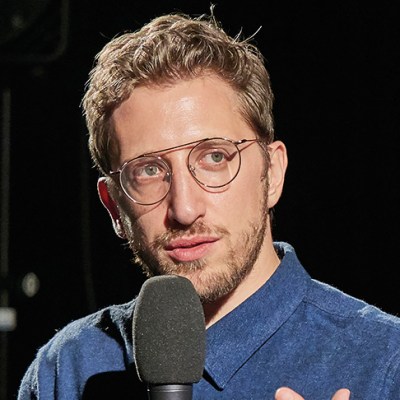Walk down the length of the Hertford Union Canal, which runs from Hackney Wick to the outskirts of Bethnal Green, and you’ll eventually stumble on the Chisenhale Works building, which now houses a dance studio as well as the Chisenhale Gallery. It is an unremarkable, industrial affair; the first thing you notice will probably be the derelict state of its windows, around half of which are put out. Look closely, however, and you’ll be able to make out three letters printed on the side of the building – C, H and N – their reddish hue almost entirely blending into the brown brickwork. One might assume that the letters refer to Chisenhale; in fact, they stand for CHN Veneers, a company, founded in 1943 by a Jewish businessman named Morris Cohen, that operated out of the building for around four decades of the 20th century.
Exterior view of Chisenhale Gallery, with the letters C, H and N. Photo: Andy Keate
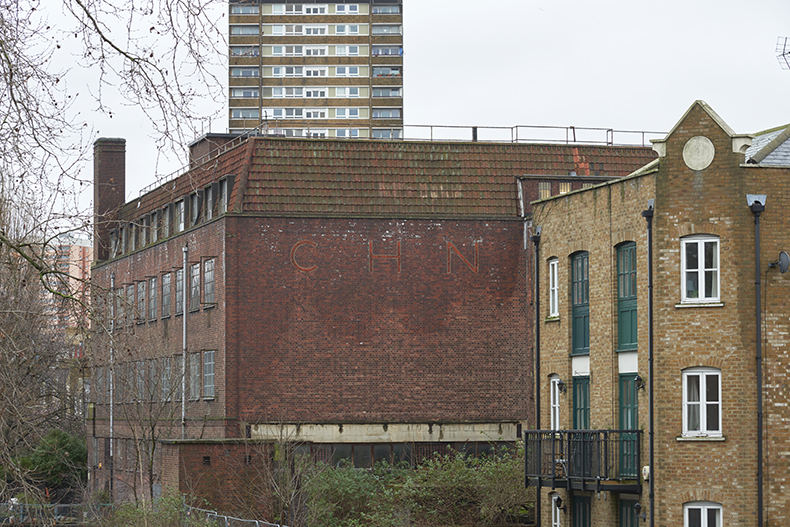
It is fitting for the London-based artist Joshua Leon that these letters are easy to miss, for his installation at Chisenhale is informed by ideas of occlusion and absence. That much is plain as soon as you enter the gallery, which is arrestingly bare, save a row of yellowed frames on the wall, a single speaker and two sigmoid wooden benches. (Had I not been handed an exhibition programme at the door, I might have wondered if I had arrived a week early.) Yet despite its sparseness – or rather, because of it – each individual element of ‘The Missing O and E’ aligns to create a surprisingly effective piece of site-specific art.
The exhibition title alludes to Leon’s idea that CHN was probably a shortening of the name ‘Cohen’; what is hidden in those two missing letters is, for Leon, a partial history of Jews in the 20th century, many of whom were forced to change their names or whose names were bastardised. Leon has stained two of the gallery windows with those letters, O and E, and in an interview with the curators notes the duality of the term ‘stained glass’, which signifies a thing of beauty as well as carrying assumptions of disgust – the phrase ‘stain on society’, he notes, has long been used to refer to Jews and other minorities. From the inside of the white gallery space, the yellowed strips of glass colour and blur our view of the outside world, as if tarring the surrounding treetops and chimneys with the weight of the building’s forgotten history.
Installation view of ‘The Missing O and E’, (2024), Joshua Leon. Photo: Andy Keate; © the artist
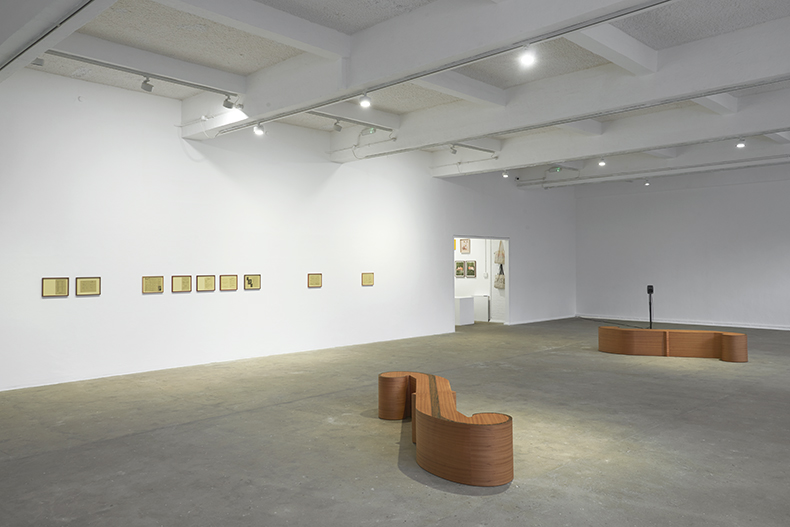
Leon has fused this history with that of his own family: just as he disinters the name of the building’s founder, so too does he memorialise his Jewish grandfather, a classical violinist whose concert programmes from the London Philharmonic, the Yorkshire Symphony Orchestra and various chamber groups are exhibited here behind yellow-tinged glass that creates a satisfying consonance with the stained windows opposite. It’s no straightforward task finding Leon’s grandfather in these programmes, partly because he is often buried among a slew of names somewhere in the second violins, and partly because each text gives a slightly different iteration of his name: Kurt Hutter, Ken Hutten, Curtis Hutter, Karl Hutter. Some of these are intentional changes – in the interview Leon brings up Joseph Roth’s pronouncement that Jews have never been particularly attached to their names because they cannot think of them as solid or unchanging things – and some of which are mistakes made by the programme writer.
Kurt, Ken, Curtis, David (what’s in a name?) (2024), Joshua Leon. Photo: Andy Keate; © the artist
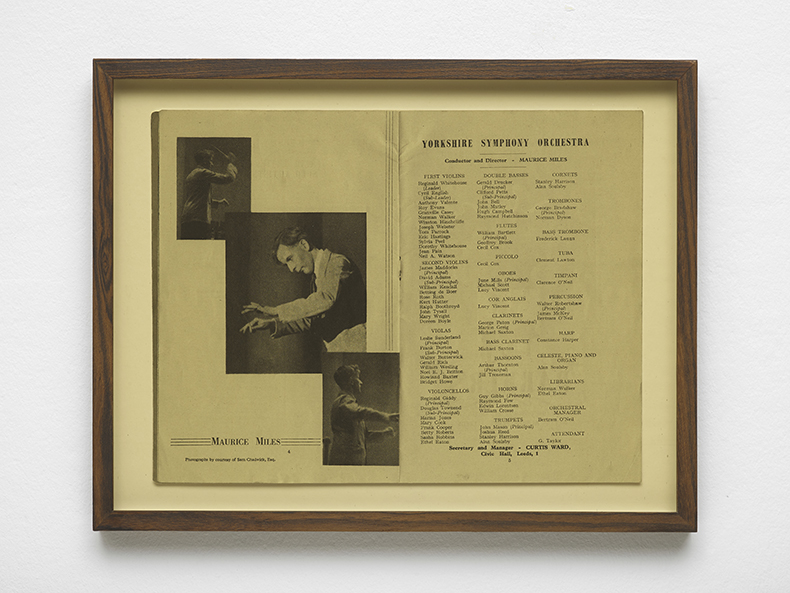
It might all be slightly muted, if interesting, were it not for the speaker in the corner of the room, which plays the second violin part from Elgar’s Enigma Variations (1899) – the same part played by Leon’s grandfather with the London Philharmonic in the 1950s. Two benches, shaped like the holes in a violin, sit in the middle of the space, waiting for gallery-goers to perch and listen. The music swoops in and out of one’s consciousness – silent for periods, then bracingly staccato, then mellifluous and wistful, always drawing attention, John Cage-like, to what is not there as well as to what is.
Installation view of ‘The Missing O and E’, (2024), Joshua Leon. Photo: Andy Keate; © the artist
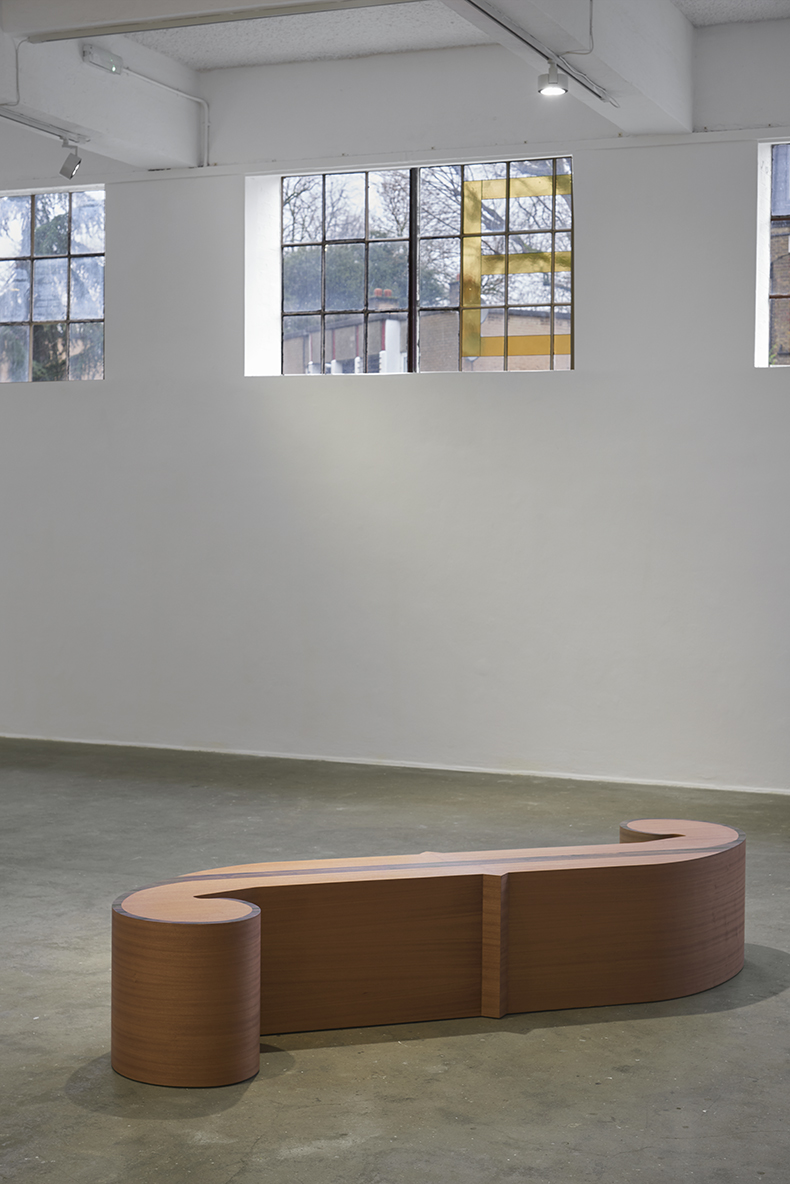
In a programme note for the premiere of the Enigma Variations, Elgar wrote of the piece’s hidden centre: ‘The Enigma I will not explain – its “dark saying” must be left unguessed […] over the whole set another and larger theme “goes”, but is not played.’ Leon could hardly have chosen a better piece of music to accompany this minimalist installation, which is, at its heart, a meditation on the selectiveness of historical memory, a work of absence and an attempt at restoration. Each constituent part is distinct, but the whole chimes together rather beautifully. The violin may be playing alone, but my overwhelming feeling, as I step back out on to the canalside and look at those three letters, now appearing somehow bolder than before, is one of pure harmony.
‘The Missing O and E’ is at Chisenhale Gallery in London until 21 April.
